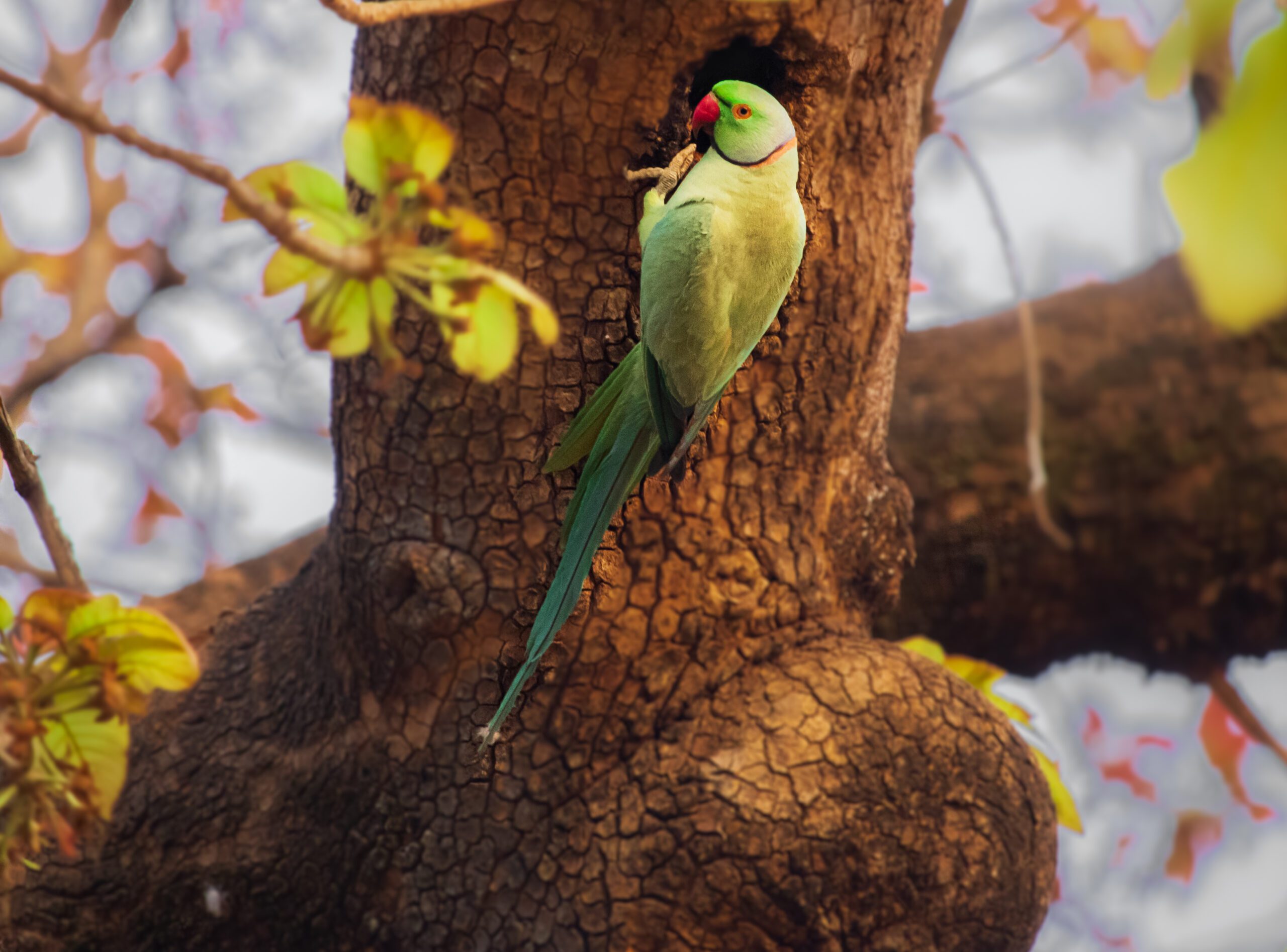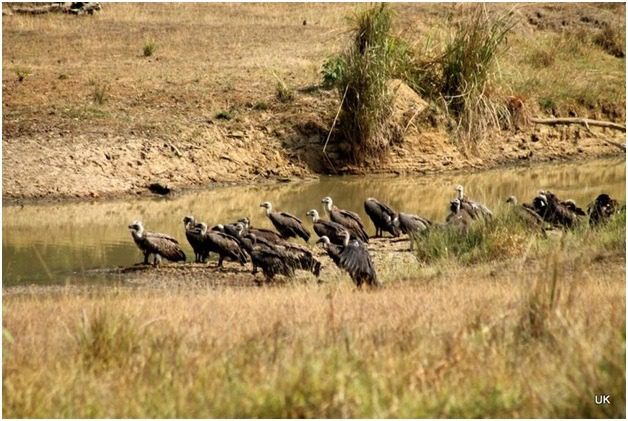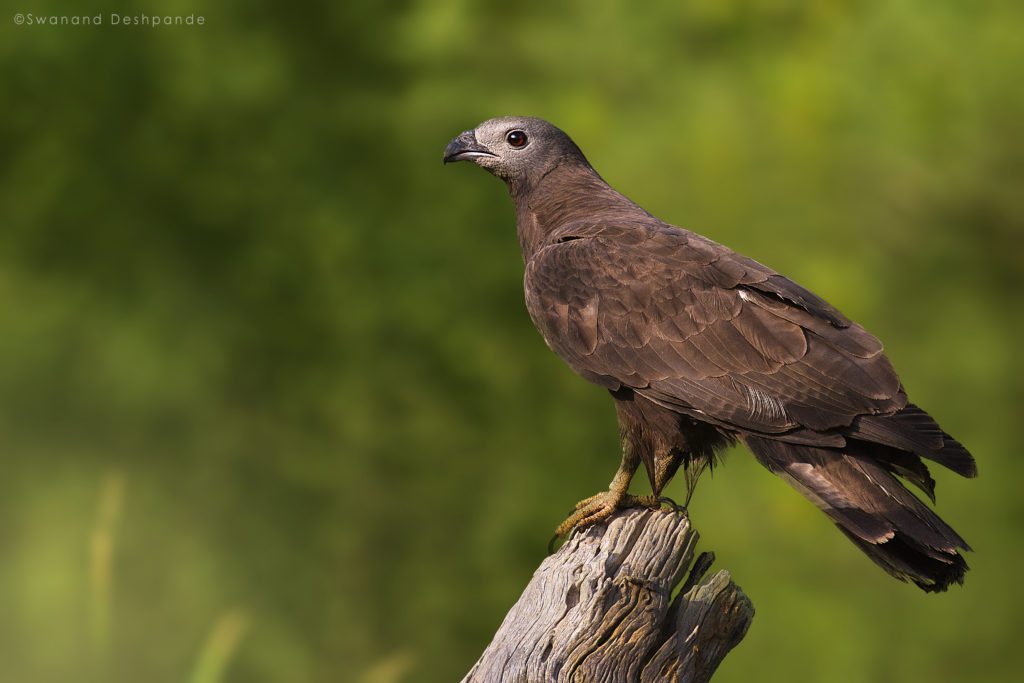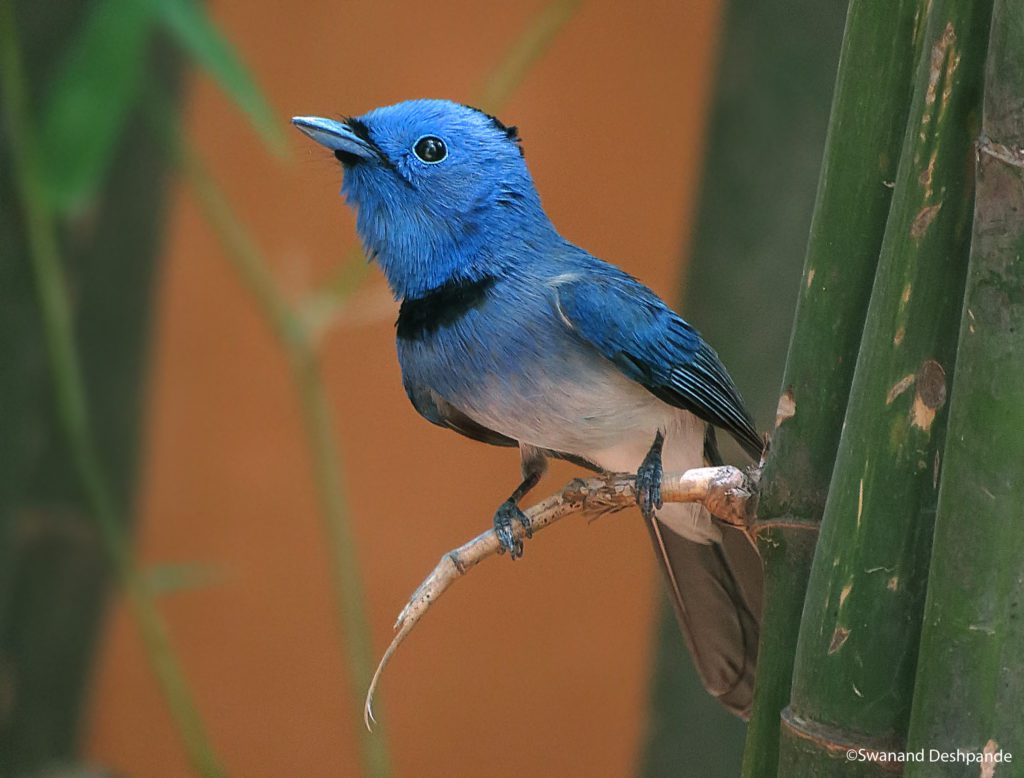India with its diverse landscapes and climates, is home to a rich variety of wildlife, including a captivating array of bird species. Among these avian residents, parakeets stand out due to their vibrant colors, remarkable adaptability, and engaging behaviours. In this blog, dive into the fascinating world of parakeets in India, exploring their species, habitats, behaviours, and conservation status.
Confusion Between Parrots and Parakeets in India
Parrots are a diverse group of birds that vary in size, including large species like Macaws and Cockatoos. While parakeets in India are a specific type of small to medium-sized parrot known for their long, slender tail feathers. Parrots can be found in various sizes, with strong, curved beaks and a high ability to mimic sounds. In contrast, parakeets, such as Budgies and Rose-Ringed Parakeets, are generally smaller, with delicate beaks and a more streamlined body.
While all parakeets are parrots, the term “parrot” encompasses a broader range of species, including both large and small birds.
A symphony of colours: Parakeets in India
India is home to several parakeet species, each contributing to the country’s avian diversity with their unique colours and traits. Here are some of the most notable ones:
1. Alexandrine Parakeet (Psittacula eupatria)
Appearance: The Alexandrine Parakeet is a large parrot with predominantly green plumage. Males are distinguished by their rose-colored nape and a broad black ring around the neck. They have a pale blue or grayish underbelly and a bright red beak.
Distribution: Native to the Indian subcontinent, including the forests of the central India , western ghats, and extending into northeastern India. They are also found in parts of Bangladesh and Myanmar.
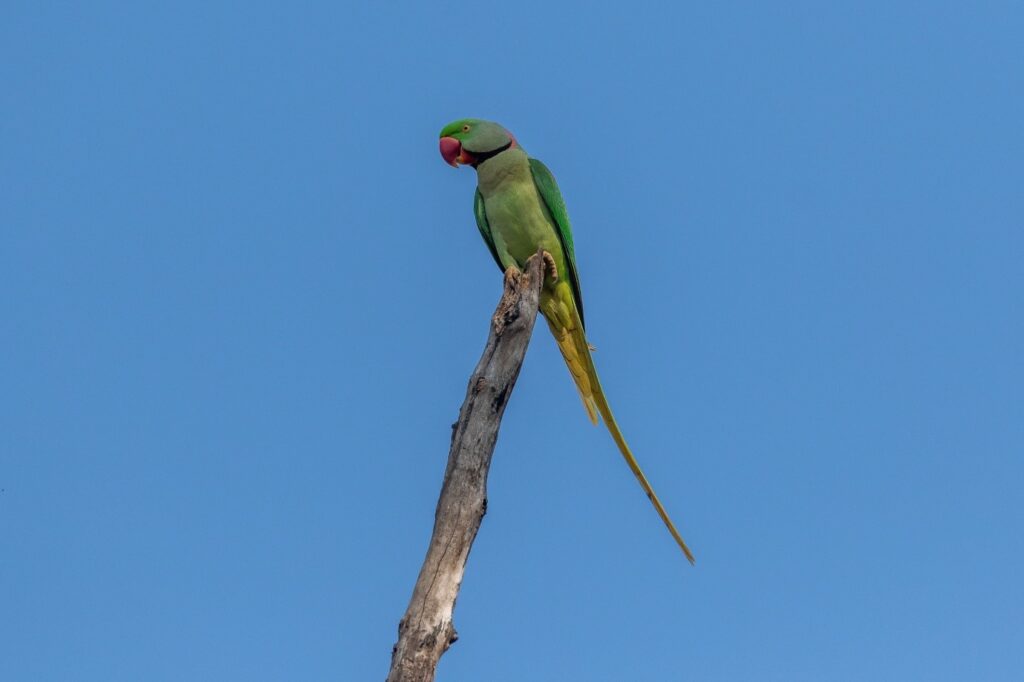
Behaviour: These parakeets are social, often seen in noisy flocks. They are known for their intelligence and can mimic human speech. They prefer forested areas and open woodlands.
2. Rose-Ringed Parakeet (Psittacula krameri)
Appearance: Often confused with the Alexandrine Parakeet, the Rose-Ringed Parakeet has a green body with a distinct black ring and rose-colored collar in males. Females lack the ring.
Distribution: Widespread across India, including urban areas, gardens, and parks. Also found in Africa and parts of the Middle East.

Behaviour: These parakeets are highly adaptable and can thrive in various environments. They are known for their vocal nature and ability to mimic sounds.
Also Read: Birds in Satpura National Park
3. Plum-Headed Parakeet (Psittacula cyanocephala)
Appearance: Males are noted for their plum-coloured head and neck, contrasting with their green body. Females are less colourful, with a more uniform green appearance.
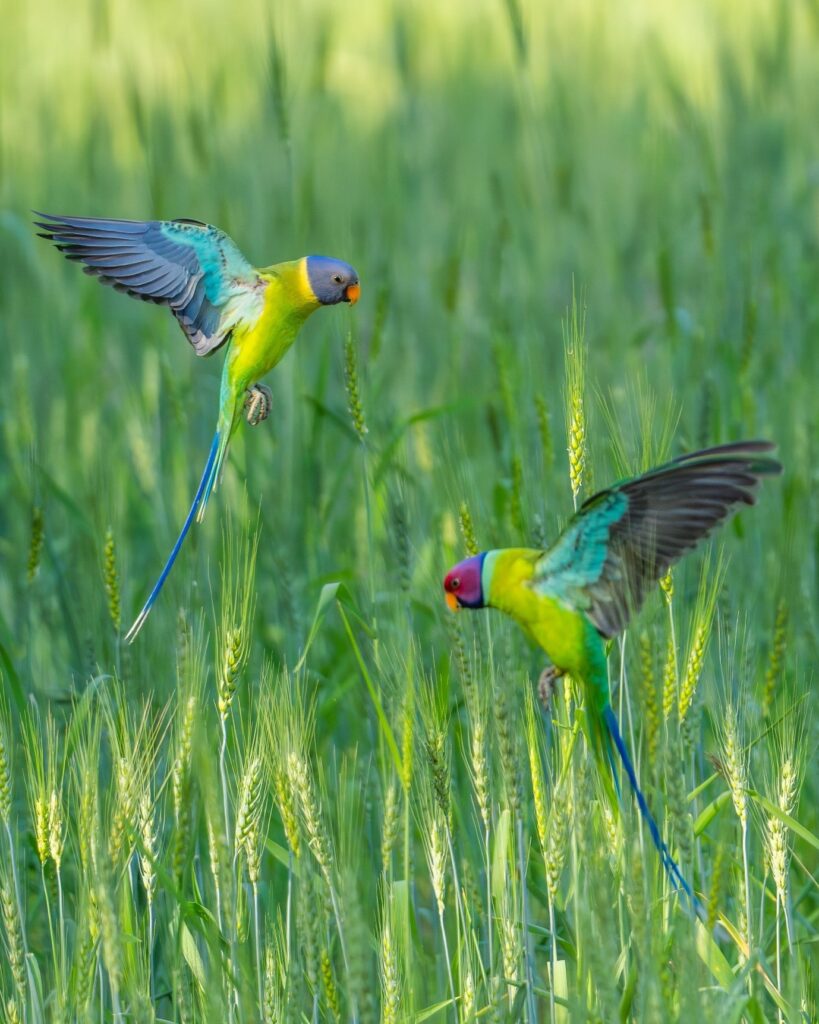
Distribution: Found in the northern and central parts of India, including open woodlands and forest edges.
Behaviour: Social and noisy, these parakeets form large flocks and are known for their acrobatic flight. They prefer forested or open areas with nearby water sources.
4. Blossom-Headed Parakeet (Psittacula roseata)
Appearance: This species is similar in appearance to the Plum-Headed Parakeet but with a more distinct rose-colored head in males. They have a green body with a subtle pinkish hue on the chest.
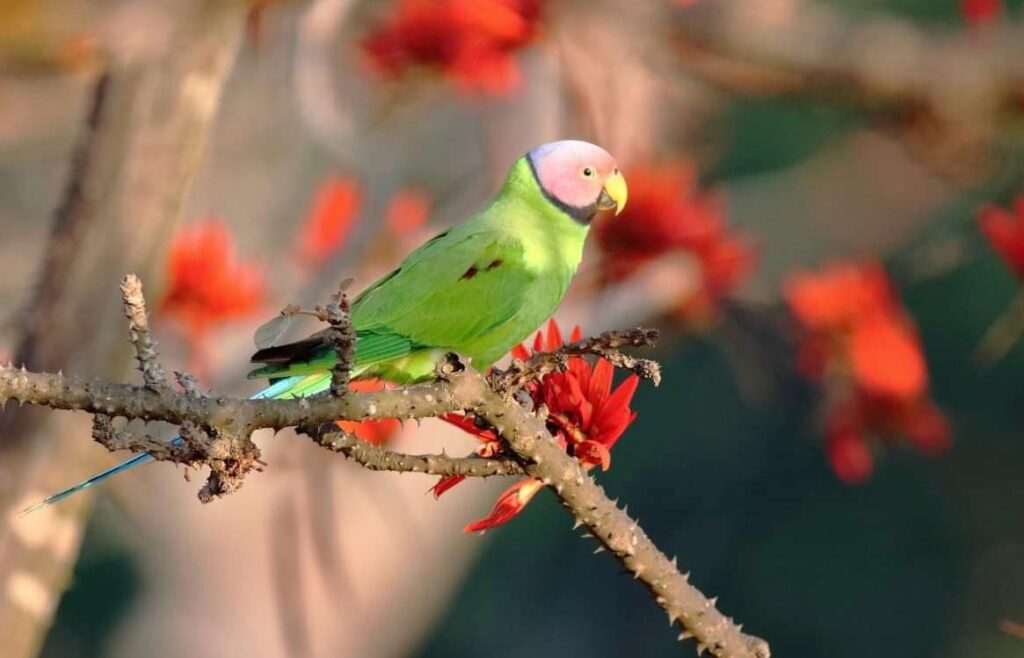
Distribution: Restricted to the eastern parts of India, particularly in the states of Assam and Arunachal Pradesh.
Behaviour: Prefers forested habitats and is known for its vibrant social interactions. These parakeets are often seen in small flocks.
5. Malabar Parakeet (Psittacula columboides)
Appearance: The Malabar Parakeet has a green body with head in a distinctive bluish-grey color, which contrasts with the green body. Males have a dark black stripe (or moustache) running from the beak down the side of the face, while females lack this prominent feature. The Malabar Parakeet has predominantly green plumage with a notable bluish tint on its wings and tail, which gives it the name “Blue-Winged Parakeet.”
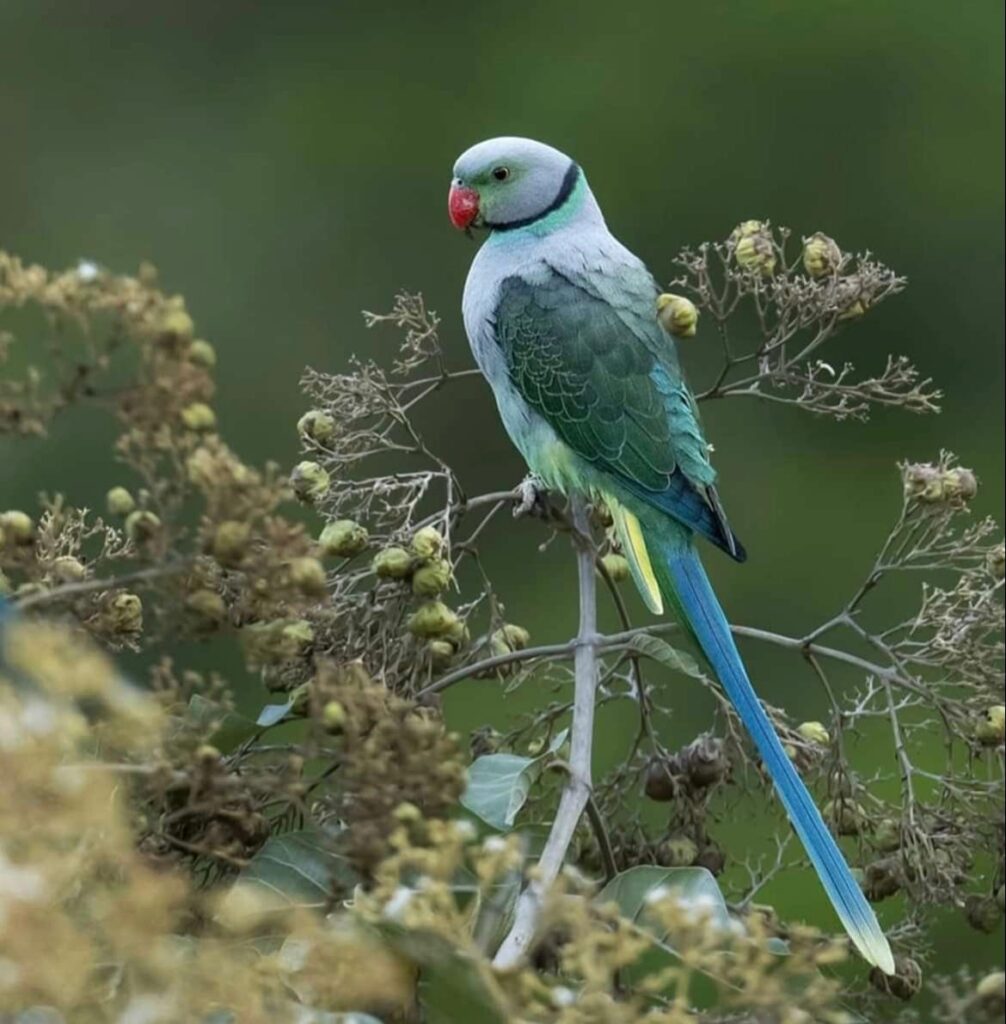
Distribution: Endemic to the Malabar Coast of southwestern India, particularly in Kerala and parts of Karnataka.
Behaviour: Prefers dense evergreen forests and is known for its social behaviour, often forming large flocks.
Also Read: Birds In Central India
6. Slaty-Headed Parakeet (Psittacula longicauda)
Appearance: The Slaty-Headed Parakeet has a green body with a distinctive slaty-blue head and neck. The tail is long and often appears slightly blue.
Distribution: Found in the northeastern parts of India, including Assam and the surrounding regions.

Behaviour: Prefers dense forests and is known for its social and noisy behaviour. These parakeets are often seen in flocks foraging for fruits and seeds.
7. Gray-Headed Parakeet (Psittacula caniceps)
Appearance: This parakeet has a gray head and neck, with a predominantly green body. The gray coloration extends down to the shoulders and chest, contrasting beautifully with the vibrant green. Its beak is a pale yellow, and the tail feathers are tinged with blue, adding a subtle yet striking detail to its appearance.
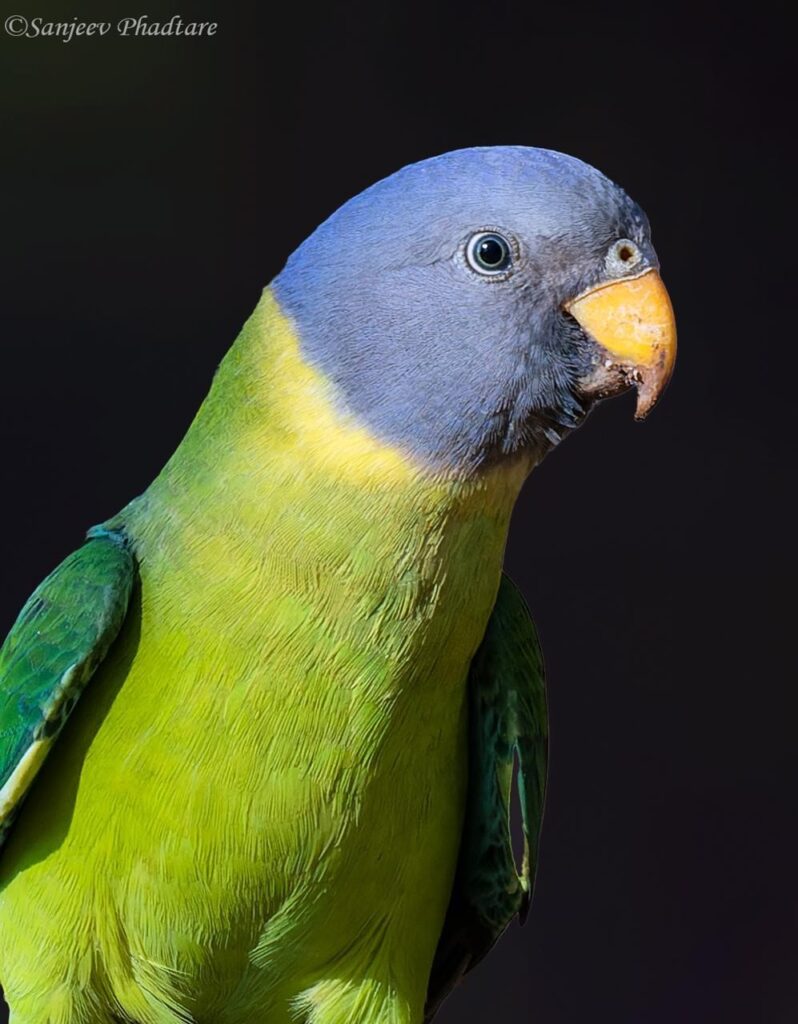
Distribution: Inhabits the eastern Himalayan region, including parts of Sikkim and West Bengal.
Behaviour: Prefers high-altitude forests and is known for its social nature, often seen in flocks. These parakeets are active and vocal, contributing to their vibrant forest environment.
8. Derbyan Parakeet (Psittacula derbiana)
Appearance: The Derbyan Parakeet is a large parakeet with a distinctive blue and green plumage. Males have a red beak and a prominent black ring around the neck.

Distribution: Found in the eastern Himalayas, including parts of northeastern India and the adjacent areas of Bhutan and Nepal.
Behaviour: Prefers dense forests and is known for its striking appearance and social behaviour. They are often seen in pairs or small flocks.
Also Read: Birds In Pench National Park
9. Red-Breasted Parakeet (Psittacula alexandri)
Appearance: This parakeet has a green body with a distinctive red chest and a blue head in males. The underparts are bright red, contrasting with the green body.

Distribution: Found in the northeastern parts of India, including Assam and parts of Arunachal Pradesh. (Surprisingly there are wild Red-Breasted Parakeet flocks in Mumbai city as well. Captive birds which were released long time back, and have managed to survive in the city by themselves).
Behaviour: Prefers forested and hilly areas. These parakeets are social and often seen in noisy flocks.
10. Nicobar Parakeet (Psittacula caniceps)
Appearance: The Nicobar Parakeet has a bright green body with a contrasting blue head and a red beak. It also features a distinctive pale blue wing.
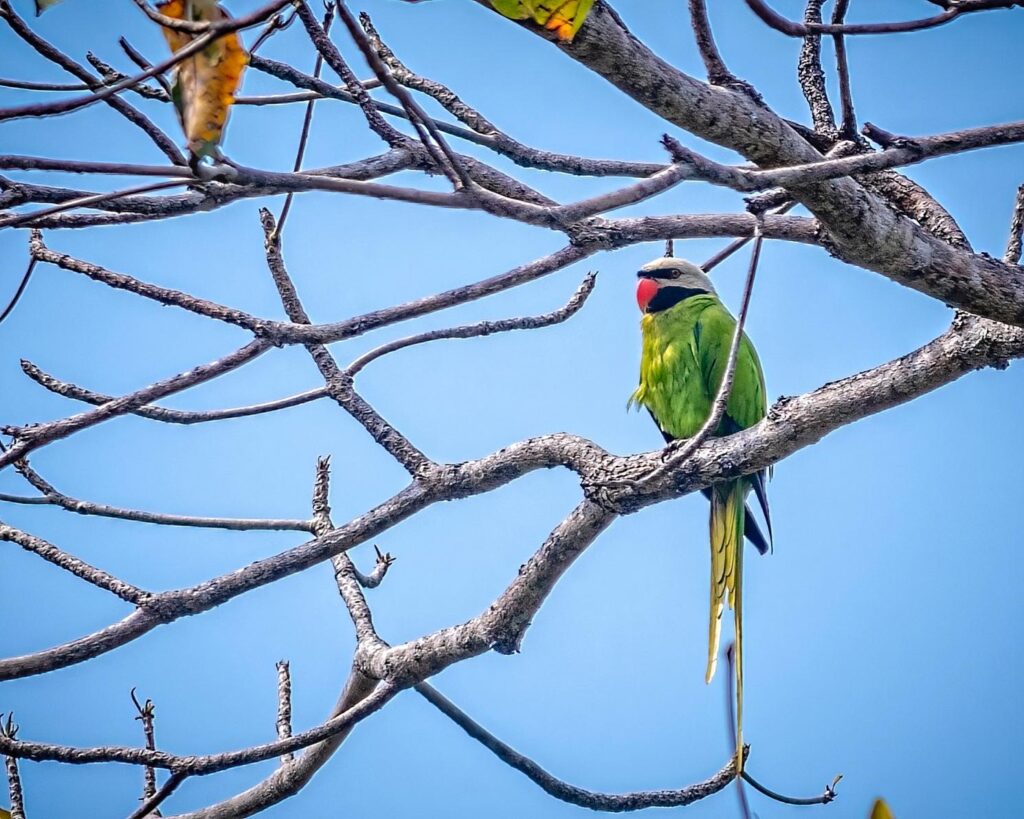
Distribution: Endemic to the Nicobar Islands in the Bay of Bengal.
Behaviour: Inhabits the tropical forests of the Nicobar Islands and is known for its vibrant and social nature. These parakeets are often seen in flocks in their native habitat.
11. Long-Tailed Parakeet (Psittacula longicauda)
Appearance: Long-Tailed Parakeet is distinguished by its bright green body and strikingly long, slender tail feathers. It has a vibrant red beak and a bluish tinge on the head, with the elongated tail adding to its graceful appearance.

Distribution: Found in the forests of the northeastern parts of India, including Assam and the surrounding regions.
Behaviour: Prefers dense, high-altitude forests. These parakeets are social and known for their acrobatic flight and vibrant calls.
12. Vernal Hanging Parrot (Loriculus vernalis)
Appearance: The Vernal Hanging Parrot is a small, vibrant parrot with bright green plumage. It has a distinctive red rump, and males feature a subtle orange patch on the throat. Their beak is orange, and their feet are pinkish, adding to their striking appearance.
Distribution: This species is found across the Indian subcontinent, including parts of India, Sri Lanka, and Southeast Asia. It thrives in evergreen forests, secondary growth, and well-wooded areas and is often seen in the treetops.
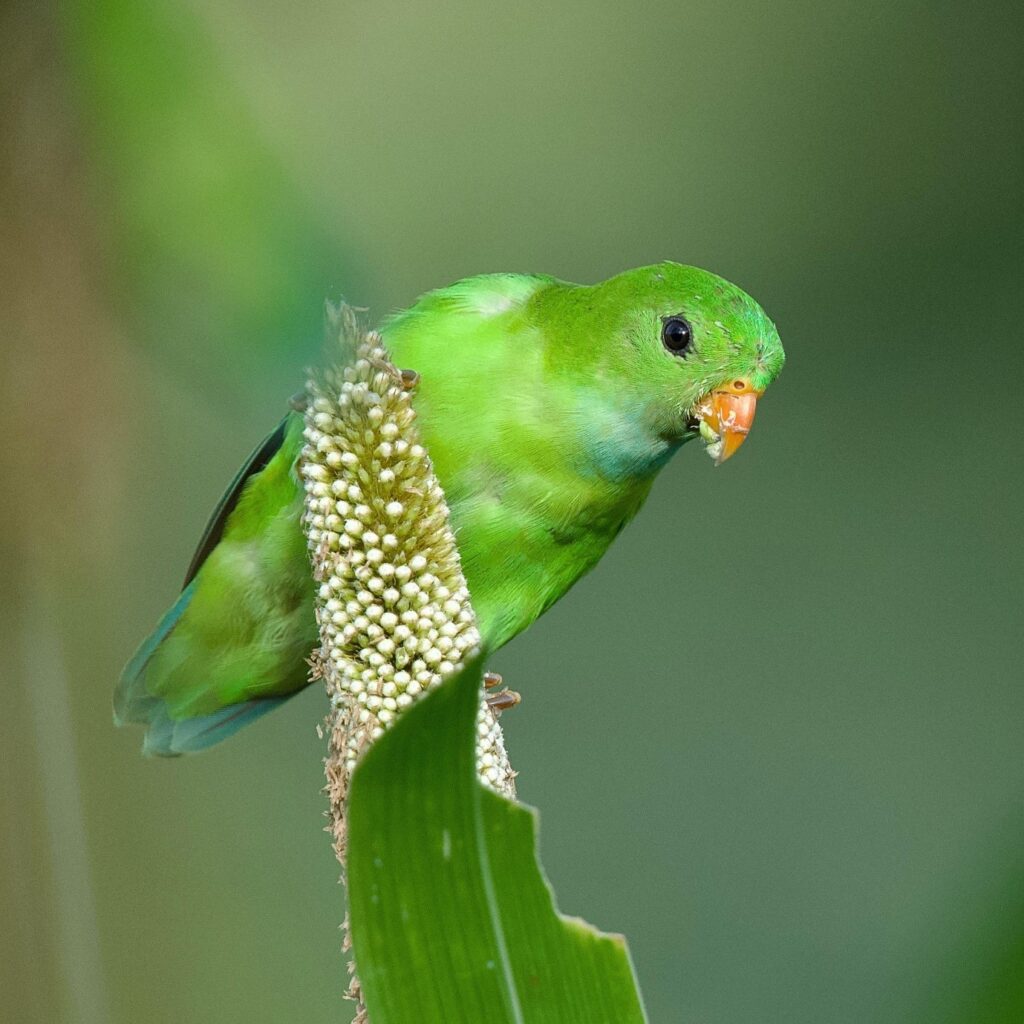
Behaviour: True to its name, the Vernal Hanging Parrot often hangs upside down while feeding on fruits, nectar, and buds, a behaviour that inspired its name. These birds are generally solitary or found in small groups and they are less noisy compared to other parakeet species. They are also known for their unique roosting behaviour, where they tuck themselves into leaves at night, folding the leaf around them for protection. This species is relatively quiet, making soft, high-pitched calls and is known for its swift, agile flight through the forest canopy.
Also Read: Birds of Kanha National Park
Habitats and Distribution of Parakeets in India
The diverse habitats of India, from the Himalayan foothills and dense forests of the Western Ghats to the arid deserts and urban landscapes. Parakeets in India can be found in different habitats. Parakeets are incredibly adaptable birds, thriving in various environments. They are found in:
• Tropical Rainforests: Such as those in the Western Ghats, where species like the Vernal Hanging Parrot can be observed.
• Temperate Forests: Including the Himalayan foothills, which are home to species like the Alexandrine Parakeet.
• Urban Areas: The Rose-Ringed parakeet is particularly successful in urban environments, where it can often be seen in city parks and gardens.
Social Structure and Behavior of Parakeets in India
Parakeets in India are renowned for their social nature. They typically form large flocks that can number in the hundreds, especially during the breeding season. These flocks engage in a variety of social behaviours, including:
• Foraging: Parakeets are primarily herbivorous, feeding on fruits, seeds, and nuts. Their strong beaks are adapted to cracking open seeds and nuts.
• Communication: They are vocal birds, using a range of calls and whistles to communicate within the flock. Some species, like the Alexandrine Parakeet, are known for their ability to mimic human speech.
• Courtship and Mating: Courtship involves elaborate displays of plumage and mutual preening. Parakeets are monogamous, with pairs often staying together for life.
Reproduction and Lifespan of Parakeets in India
Parakeets typically build their nests in tree cavities or, in urban areas, in building crevices. The female lays a clutch of eggs, which she incubates for about 18 to 22 days. Both parents are involved in raising the young, which fledge the nest after about Four to six weeks. In the wild, parakeets can live for 10 to 15 years, though their lifespan can be significantly longer in captivity, where they can live up to 25 years with proper care.
Conservation Status of Parakeets in India
While some parakeet species are abundant and widespread, others face threats due to habitat loss, illegal pet trade, and environmental changes. Conservation efforts are crucial to ensure the survival of these colourful birds. Organizations and wildlife enthusiasts are working to protect their habitats and combat illegal trade, ensuring that future generations can continue to enjoy the sight of parakeets in the wild.
Parakeets in India are a testament to the country’s rich avian diversity. Their vibrant colours, social behaviours, and adaptability make them fascinating subjects of study and enjoyment. As we continue to explore and appreciate these beautiful birds, it is essential to remain vigilant in our efforts to protect their habitats and ensure their survival for years to come.
Species of parakeets in India offer a fascinating glimpse into the country’s avian diversity. From the urban adaptability of the Rose-Ringed Parakeet to the specialized habitat of the Nicobar Parakeet, each species plays a unique role in their ecosystem. Understanding these species helps in appreciating their ecological importance and the need for their conservation.
Are you an avid birdwatcher? Explore our India Birding Tours page for more opportunities to experience the rich avian diversity of Central India and beyond.
Written by Vishal Sharma, Naturalist at Pugdundee Safaris

